Easter eggs, Easter Sweet Bread, Easter Lamb Cake – these are all symbols of Czech Easter. Eggs have been known to be a reward for carollers and are also beautifully decorated at Easter time, but more so they also have a symbolic meaning.
The colouring of eggs has a rich history, the eggs were dyed in ancient Egypt and Persia, but according to some historical facts, the colouring of eggs is much older. They are dyed and decorated in many ways, but the oldest method is dyeing with natural colours. You may not even realize it, but our kitchens are full of natural dyes. Common foods, such as onions, beets, black tea, coffee, or spices such as turmeric, will colour your eggs in a multitude of colours.

There are two methods for colouring eggs, the eggs can be coloured when cooking, which means that you add raw materials to the pot with water, which in turn will colour the eggs, or you can use a raw infusion and dyed the boiled eggs in brine. Of course, both methods affect the intensity of the staining in a different way. You can also try other ingredients – blueberries, spinach, etc. I dyed eggs when cooking.
Warning: natural colouring may surprise you with unexpected results, depending on the length of cooking / leaching in the brine and the amount of raw materials used.
Tip: for more pronounced colouring, vinegar can be added to the infusion (alcoholic fermented 8%).
This recipe was created in collaboration with Czech centers that promote the Czech Republic abroad. And what exactly are the Czech Centers? It is a contributory organization of the Ministry of Foreign Affairs of the Czech Republic. They connect the presentation of our country, for example in the field of culture and tourism. The network of foreign representations of the Czech Republic is an active tool in the field of public diplomacy.

Ingredients:
Brown eggs (approx. 4 pieces) – onion skins
- 1 litre of water (eggs should be completely submerged in the pot)
- dry skins of 3-4 onions.
Yellow eggs (approx. 4 pieces) – turmeric
- 1 litre of water (eggs should be completely immersed in the pot)
- 2 tablespoons turmeric
- 1 tablespoon vinegar
Blue eggs (approx. 4 pieces) – red cabbage
- 1 litre of water + red cabbage (cut into small pieces)
- 1 tablespoon of vinegar
Method:
- Remove the eggs from the refrigerator about 1 hour before the start of cooking.
- Colouring the eggs during cooking – put the required amount of water in the pot, add the individual ingredients and cook for 10-15 minutes. Attention – red cabbage does not have such great colouring ability, in this case I recommend the cold method – load boiled eggs into the brine overnight, store in the refrigerator.
- Cold method – put the required amount of water in a pot, add the individual ingredients, cook for about 20 minutes, strain and pour into a container in which you will colour the eggs. Allow the water to cool and add boiled eggs, leaving in the refrigerator overnight your eggs will infuse in the brine which will colour your eggs.
- All of the coloured eggs can be consumed, but I recommend no more than 3-4 days after cooking.

Velikonoční vajíčka, mazanec, velikonoční beránek – to vše jsou symboly českých Velikonoc. Vajíčka jsou známá především jako odměna pro koledníky nebo jako krásná velikonoční dekorace, mají i symbolický význam.
Barvení vajíček má bohatou historii, zcela jistě se vajíčka barvily už ve starověkém Egyptě a Persii, dle některých historických úvah je barvení vajíček však mnohem starší. Barví se a zdobí mnoha způsoby, ale nejstarší metodou je barvení pomocí přírodních barev. Možná si to ani neuvědomujete, ale naše kuchyně jsou plné přírodních barviv. Běžné potraviny, jako je například cibule, červená řepa, černý čaj, káva nebo koření jako je kurkuma, obarví vaše vajíčka do barev duhy.
Jsou dvě metody na barvení vajec přírodními barvami – lze barvit při vaření vajec, což znamená, že do hrnce s vodou přidáte suroviny, které vejce obarví nebo lze připravit z vody a surovin nálev a uvařená vejce do nálevu naložit třeba přes noc. Samozřejmě obě metody ovlivní jiným způsobem intenzitu zbarvení. Vyzkoušet můžete i jiné suroviny – borůvky, špenát, apod.
Upozornění: přírodní barvivo vás může překvapit neočekávanými výsledky, záleží na délce vaření / louhování v nálevu, množství použitých surovin.
Tip: pro výraznější zbarvení lze do nálevu přidat ocet (lihový kvasný 8%).
Tento recept vznikl ve spolupráci s Českými centry.

Ingredience:
Hnědá vajíčka (cca 4 kusy) – cibulové slupky
- 1 l vody (vajíčka by měla být v hrnci celá ponořená)
- suché slupky z 3-4 cibulí
Žlutá vajíčka (cca 4 kusy) – kurkuma
- 1 l vody (vajíčka by měla být v hrnci celá ponořená)
- 2 lžíce kurkumy
- 1 lžíce octa
Modrá vajíčka (cca 4 kusy) – červené zelí
- 1 l vody + ¼ červeného zelí (nakrájeného na malé kousky)
- 1 lžíce octa
Postup:
- Vejce vyndejte z lednice cca 1 hodinu před začátkem přípravy.
- Barvení vajec při vaření – do hrnce dejte požadované množství vody, přidejte jednotlivé ingredience a vařte 10–15 minut. Pozor – červené zelí nemá tak velké barvící schopnosti, doporučuji v tomto případě studenou metodu – uvařená vejce naložit do nálevu přes noc, uchovávejte v lednici.
- Studená metoda – požadované množství vody dejte do hrnce, přidejte jednotlivé suroviny, vařte cca 20 minut, sceďte a přelijte do nádoby ve které budete barvit vejce. Nechte vychladnout, přidejte UVAŘENÁ vejce a nechte přes noc v lednici.
- Obarvená vejce můžete zkonzumovat – uchovávejte v lednici, vydrží až 3-4 dny.

